Christiaan van der Klaaw Planetarium – With the World’s Smallest Mechanical Planetarium
The world's smallest mechanical planetarium lets you enjoy the solar system on your wrist.
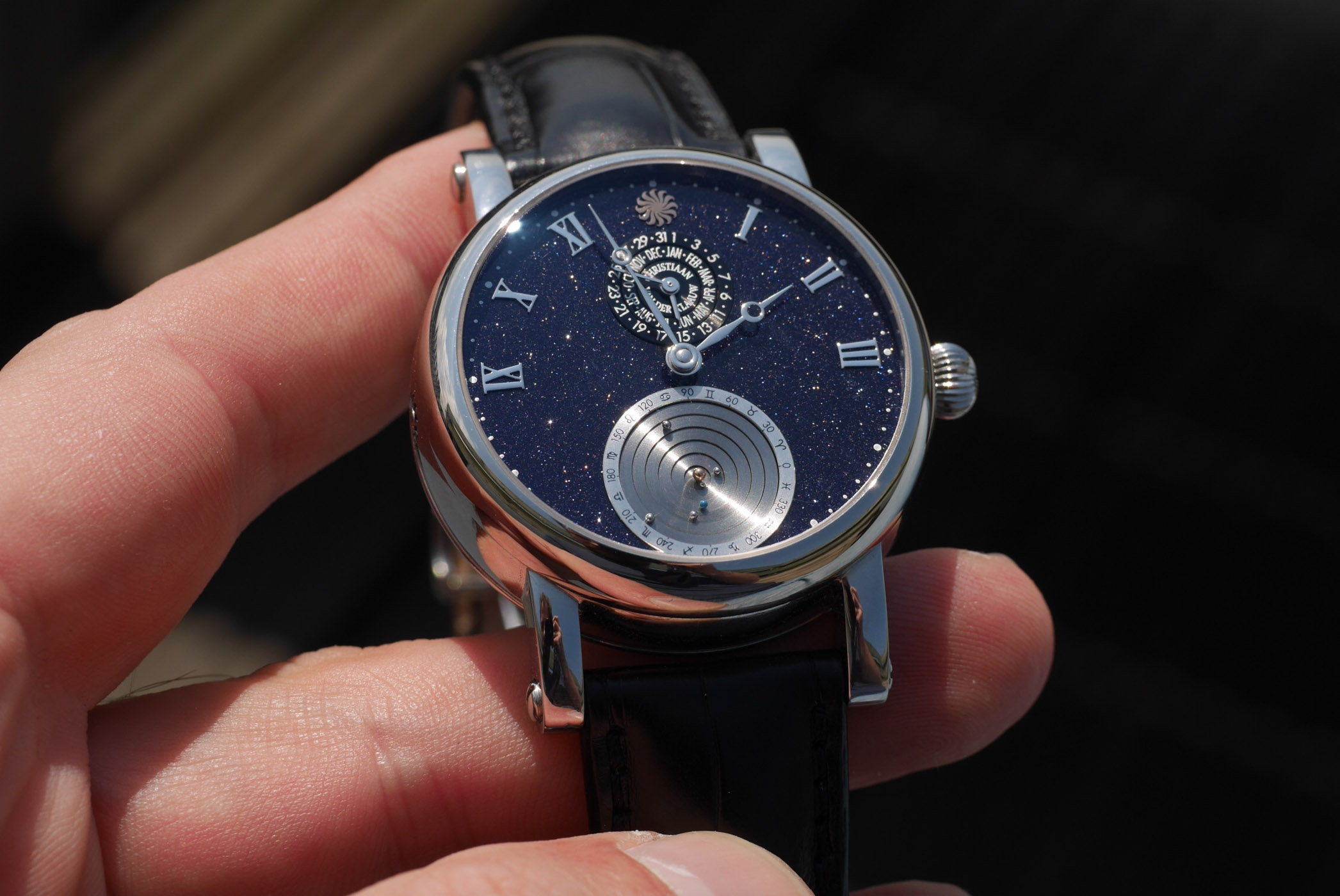
Christiaan van der Klaauw will go down in history as having the created the smallest mechanical planetarium in the world, condensed into the miniature arena of a wristwatch – or in fact, a portion of a wristwatch. His opus, the 40mm CVDK Planetarium, depicts the real-time orbits of Mercury, Venus, Earth, Mars, Jupiter and Saturn as they rotate around the Sun. A mechanical miracle that unites horology and astronomy, the CVDK Planetarium – first launched in 1999 – is also a beautiful work of portable art. Just imagine if Copernicus could have got his hands on one of these and prove to his contemporaries that heliocentrism was really the way forward! In addition to the highly accurate representation of planetary motions, the Planetarium has an annual calendar complication.
Astronomical fame
Christiaan van der Klaauw is one the most famous watchmakers in the Netherlands and probably worldwide when it comes to hand-made, astronomical complications. Since 1974, this genius clock and watchmaker has produced some of the most beautiful and complicated astronomical masterpieces including the smallest mechanical Planetarium, which we will be exploring today, and the most accurate 3D moon phase watch (with a deviation of only one day in 11,000 years) on Earth.
Recipient of countless awards, CVDK was officially listed as one of the 65 watch brands with Haute Horlogerie pedigree in the White Paper published by the prestigious FHH in Switzerland. With Dutch designer Daniël Rientjes at the helm since 2009, CVDK is dedicated exclusively to astronomical watches, under the watchful eye of the founder, of course. For a more detailed history of the brand, read Frank Geelen’s article here.
Dutch astronomers
As a Dutch horologist and passionate star gazer, Christiaan van der Klaauw’s creations pay homage to a legion of acclaimed Dutch astronomers who have helped expand our knowledge of the skies since the 17th century. Although it’s hard to pinpoint one single reason why Holland has produced such a formidable bunch of astronomers, the list is long and distinguished and includes Christiaan Huygens, the man who discovered the rings and moon of Saturn, and who also invented the pendulum movement for clocks, and Eise Eisinga who, in 1781, built an (orrery) planetarium in his living room, which was later bought for the Dutch state in 1818 and is today the oldest functioning planetarium in the world.
Celestial Motion
The integration of an astronomical complication inside a watch is the crowning achievement of a watchmaker because, as we all know, planets move in mysterious ways and each one orbits the Sun at its own speed. To be precise, Mercury takes 87.97 days, Venus 224.70 days, Earth 365.24 days, Mars 686.98 days, Jupiter 11.86 years and slow-moving Saturn 29.46 years. Imagine translating this information into a mechanical movement and you start to get a feel of just how complicated Christiaan van der Klaauw’s watches really are.
To illustrate the real-time solar orbits of the planets, a miniature planetarium is incorporated on the dial at 6 o’clock. The module is composed of concentric, stacked rotating discs – each disc synchronised to represent the planet’s real-time motion. Rotating around the central golden Sun, the six planets (Earth is blue) perform a mesmerising spectacle. Even Van Cleef & Arpels, the high jewellery and watch brand, commissioned two modules from CVDK for its 2014 Midnight Planetarium and the breathtakingly beautiful 2018 Lady Arpels Planetarium.
A heavenly dial and a classic case
Made from blue aventurine glass (goldstone), the background of the dial recreates the magic of a starry night sky. Above the planetarium is the annual calendar with days and months displayed in concentric discs and the founder’s name in the centre. What is remarkable is the simplicity and elegance with which the complications have been relayed on the dial. Like all CVDK watches, the brand’s signature touches are in place. Starting with the stylised sun at 12 o’clock with 12 claws (Klaauw means claw in Dutch) and the six Roman white rhodium-plated numerals placed above an imaginary horizon to avoid spoiling the spectacle of the planetarium. Other telltale CVDK signs are the Breguet-style hands.
With such wonderful complications on board, the last thing you want is a complicated case and all CVDK watches are housed in the same classic round case with prominent lugs and an onion crown. This particular model comes in a 40mm polished stainless steel case but is available in precious metals as well. With a mechanical planetarium packed inside, you can imagine that the case is not exactly a contender for an ultra-thin prize. The sapphire crystal case back reveals another wonderful surprise with the stunning hand-engraved rotor decorated with planets and the Sun with 12 claws, while the bridges feature Geneva stripes. The automatic movement – calibre CVDK7386 with the planetarium module – is equipped with twin barrels for a generous power reserve of 96 hours.
Luckily, for those of you prone to forget winding your watch, the Planetarium comes with a Swiss Kubik winder to ensure that the astronomical complication doesn’t get out of synch. Presented on a black leather strap with a steel folding clasp with the brand’s logo, the CVDK Planetarium CKPT3304 retails for EUR 40,500. More details on www.klaauw.com.

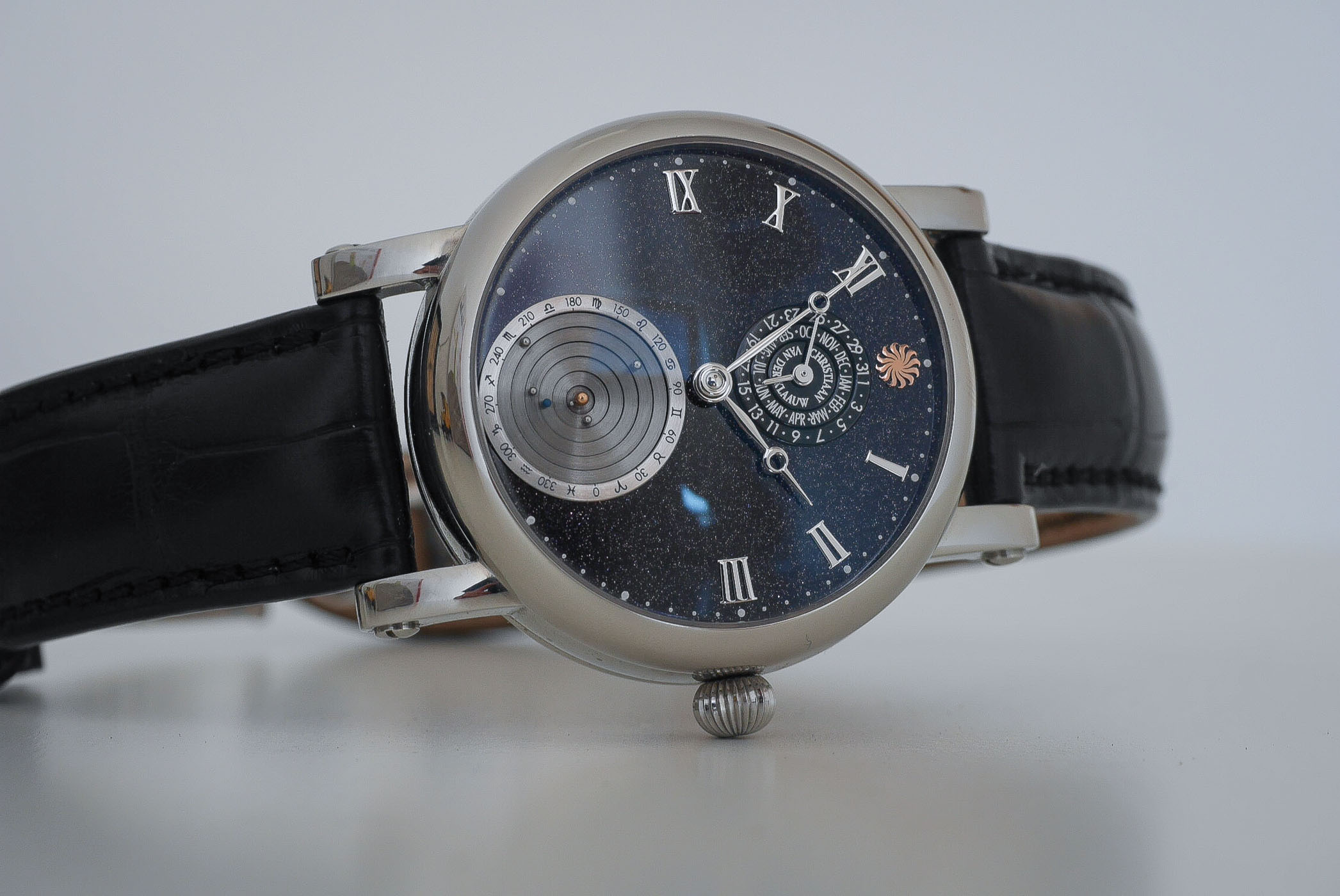
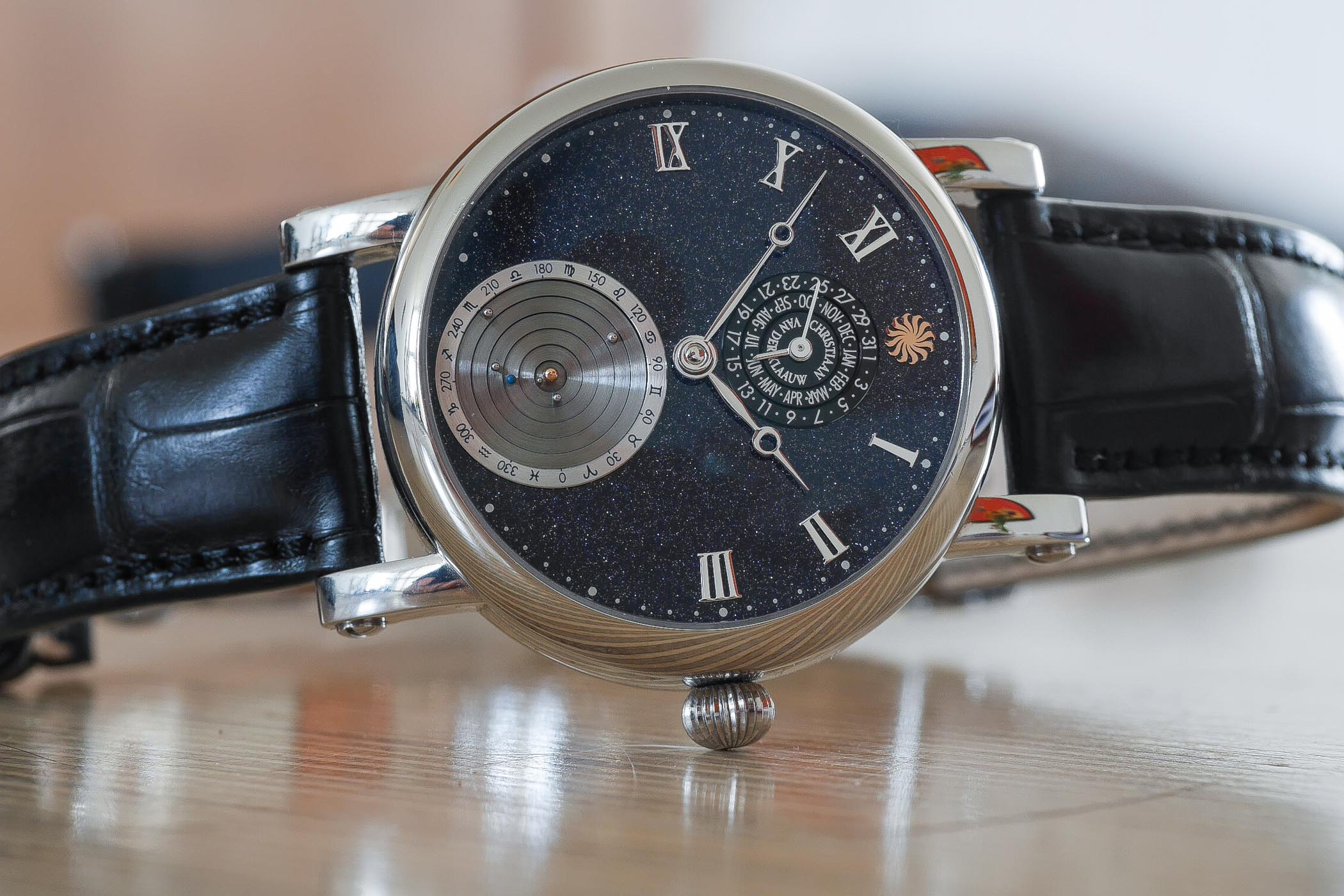
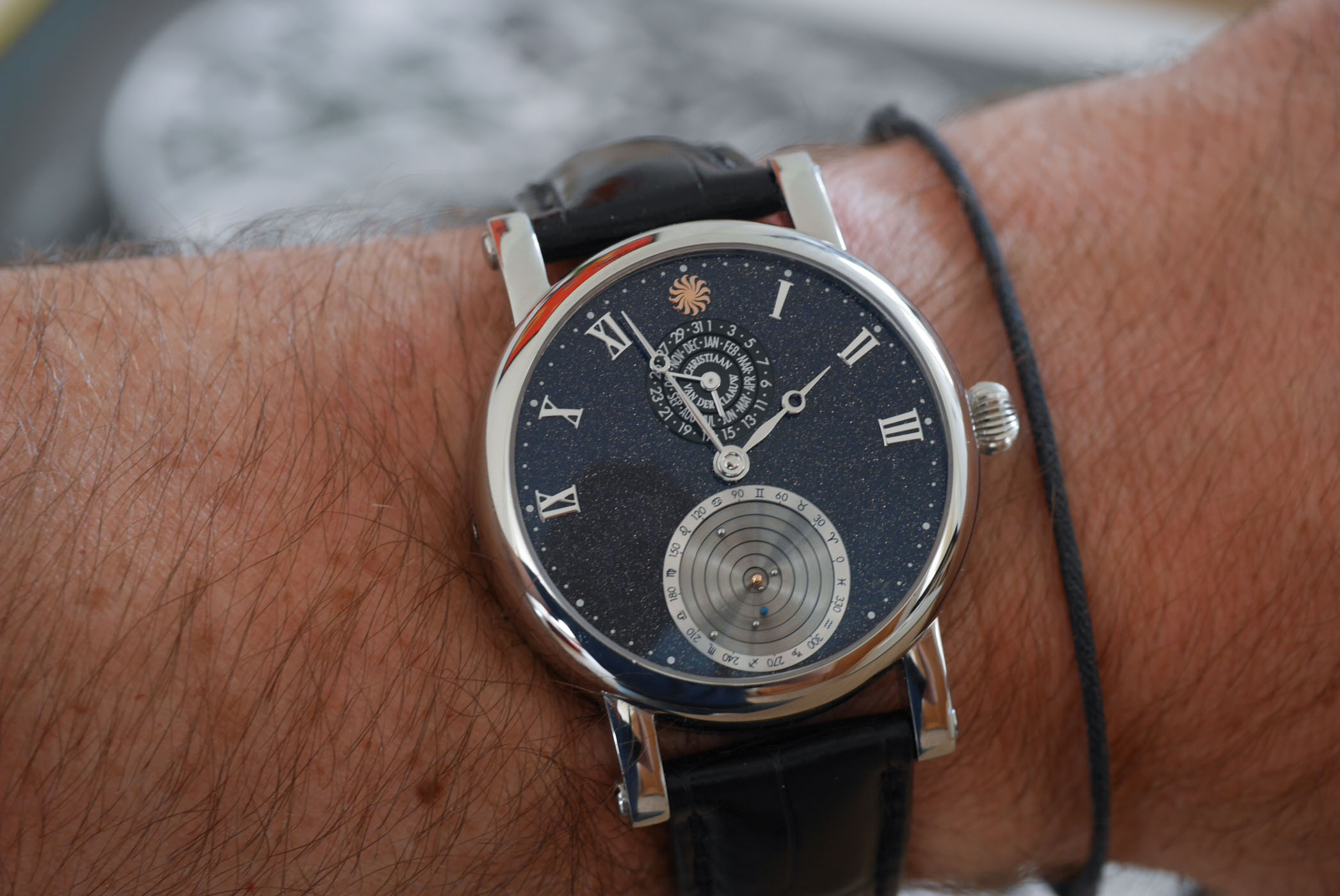
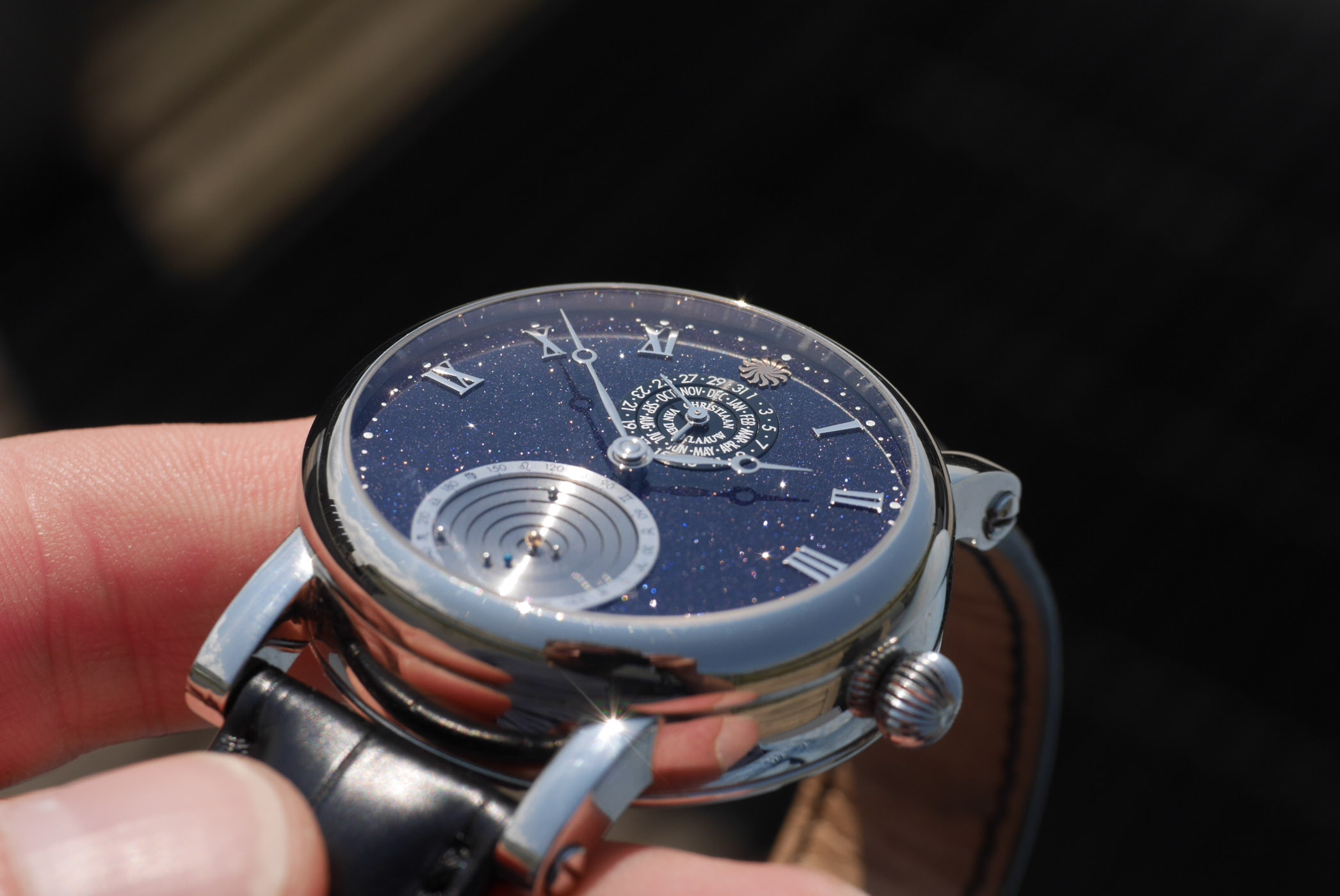
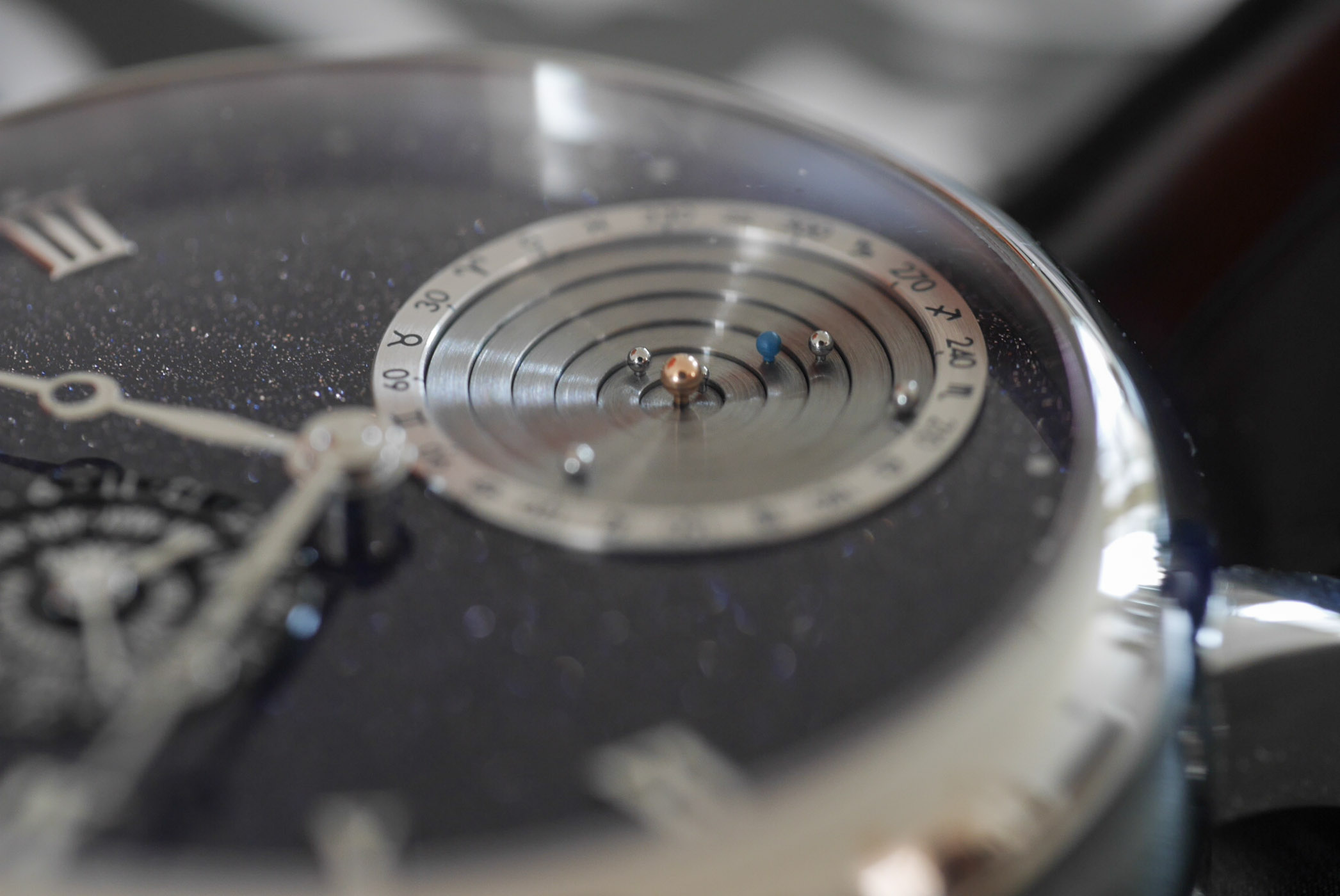
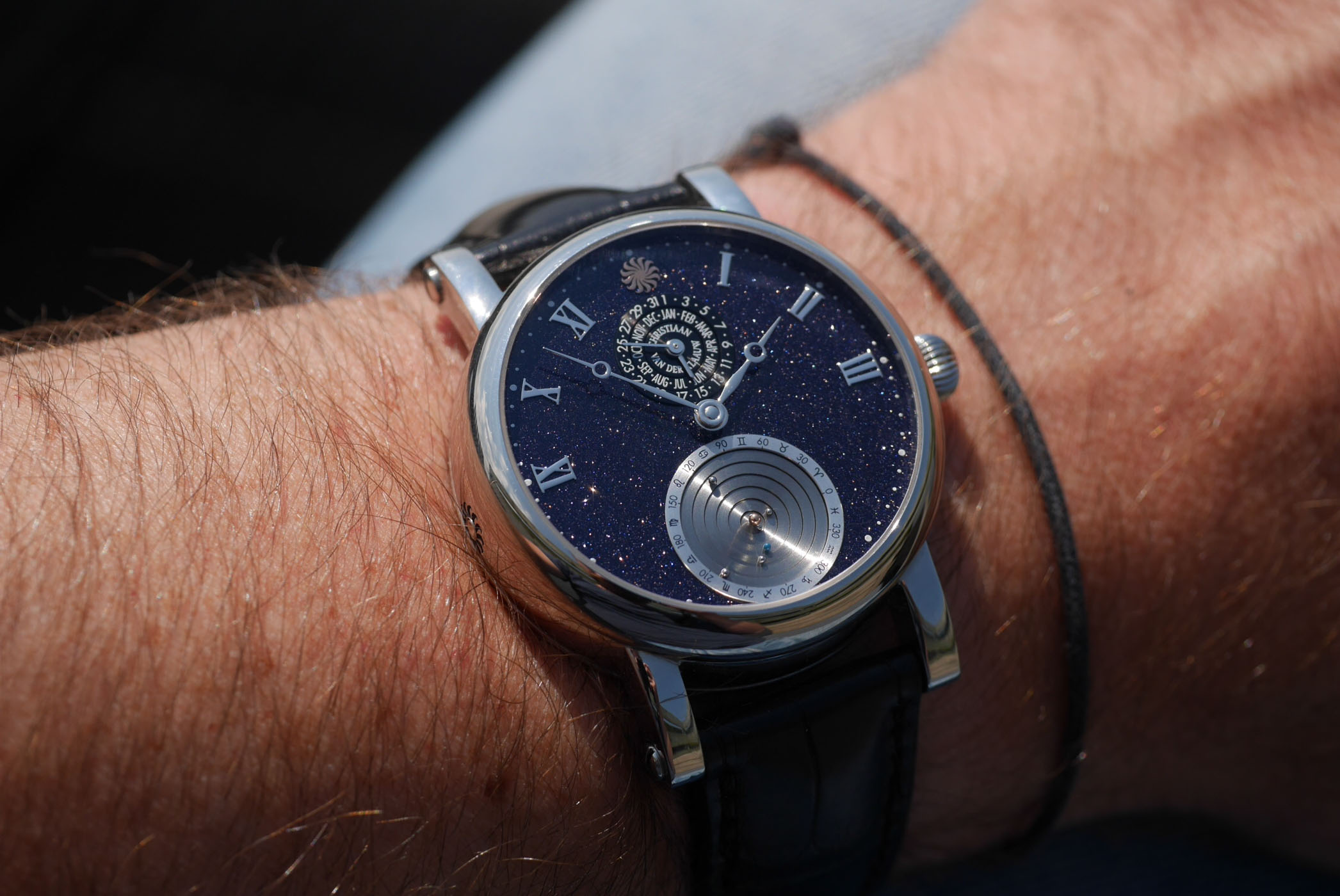

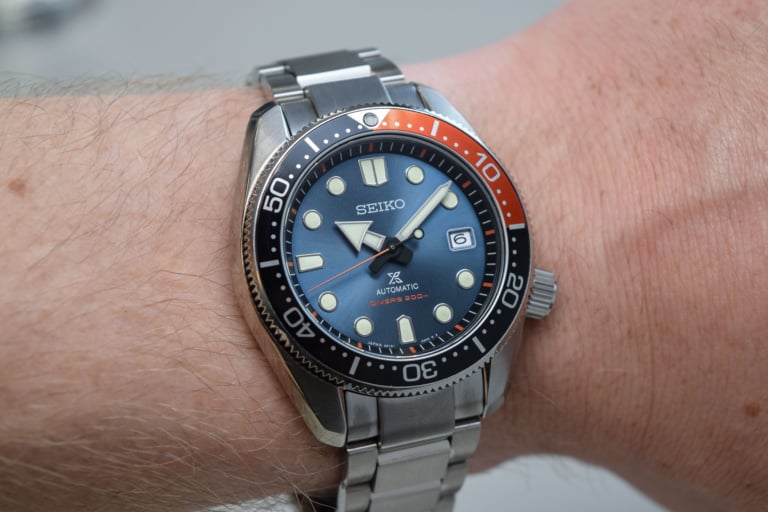
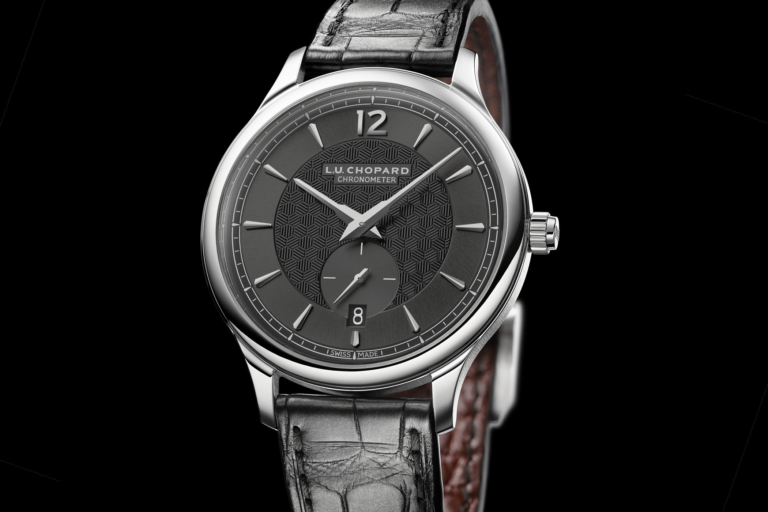
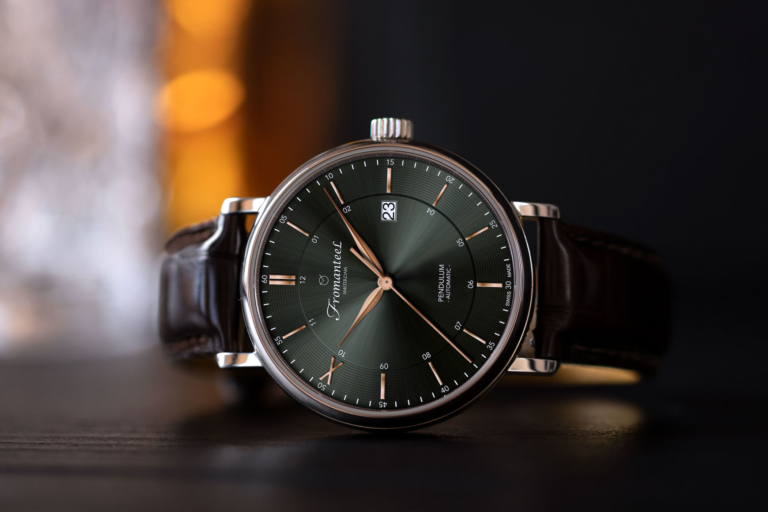
4 responses
Heavenly watch at a surprisingly down-to-earth price!
It’s nice looking but isn’t it lacking a couple of things like Uranus and Neptune. Ditching 80 % of the planets seems weak.
Probably due to the orbital periods of the Uranus and Neptune are too long for human lol.
The other planets could revolve in small steps, not necessarily in continuous motion. I’d say it is more about lack of room, though I would like to see a planetarium which goes around the whole dial. If done, it would have enough room for the whole system, even Pluto.